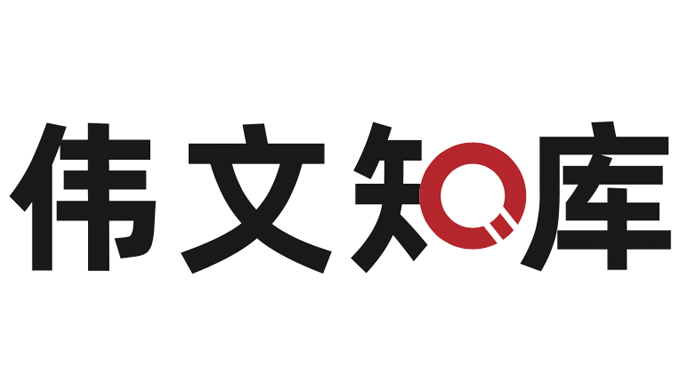联合有奖征稿启事
《中国法学前沿》(Frontiers of Law in China)系教育部主管、高教社出版的“前沿系列期刊”之一,现联合Wells公司和Wells公司所代表的美国著名法学数据库HeinOnline,面向国内外学者诚征优秀原创英文论文!
改革开放后,中国法学经过几代学人的辛苦耕耘,三十年的发展取得了长足进步。我们在系统性学习西方法治和法学的同时,也开始崭露出了一些本土特色研究:本土问题、本土立场、本土思维和本土话语;法学学术开始由翻译、介绍、评析国外法学知识向思考、解释、解决中国问题转向,并尝试向国外学术界输出中国思考。为进一步促进和推动中国特色研究的国际化,《中国法学前沿》(Frontiers of Law in China)编辑部和Wells公司及HeinOnline数据库特面向全球联合开展有奖英文征文。此次征文鼓励对中国特色问题进行深入研究,也倡导对世界普遍问题发出中国声音。
一、征文主题
1. 中国“一带一路”战略与外国法研究;
2. 中国的司法体制改革;
3. 中国民法典的编纂、颁布及其影响;
4. 其他自主选题。
特别说明:作者所投递论文须为未以任何语种公开发表的原创英文论文,并符合学术规范。
本次征文所有论文请将Word版发送到以下电子邮箱:
邮件主题统一为“姓名—题目—《中国法学前沿》”
二、评奖范围
1. 作者投递的未公开发表的原创英文论文;
2. 为对《中国法学前沿》此前作者的贡献表示认可和感谢,此次有奖征文比赛的奖励范围扩大至2014-2017年已发表在《中国法学前沿》的论文,获奖论文享有与获奖征文同等的权利。
三、评奖办法
1. 一等奖2名:一等奖论文将全文发表于《中国法学前沿》期刊,并收录进HeinOnline法学数据库的“中国法律与社会文库”(China Law & Society Library)中。获奖作者同时有机会成为HeinOnline法学数据库的“中国法律与社会文库”编委会成员。
2. 二等奖10名:二等奖论文将择优发表于《中国法学前沿》期刊。
3. 一等奖和二等奖论文将由Wells公司出资集结成册,在美国出版,并同时收录进HeinOnline数据库“中国法律与社会文库”,向全球传播推广。
4. 已在《中国法学前沿》发表的论文(限2014-2017年)符合征文主题范围者亦可参评。获奖论文将收录进HeinOnline法学数据库“中国法律与社会文库”中。
5. 作者投递的征文和《中国法学前沿》2014-2017年已发表的参评论文均由评审委员会评定,评审委员会保证评审的公平公正。
四、日程安排
1. 收稿时间:即日起至2017年10月31日;
2. 评选时间:2017年11月1日至12月31日;
3. 结果公示:2018年1月;
4. 优秀论文发表:2018年;
5. 优秀论文集出版:2018年8月31日前;
6. 优秀论文集收入HeinOnline数据库:2018年12月31日前。
有关本次活动的基本信息和持续进展,请登录中国法学学术平台:http://www.wells.org.cn/Blog/vive/71
五、主办单位介绍
1. 《中国法学前沿》(Frontiers of Law in China)
《中国法学前沿》(Frontiers of Law in China)是中国人民大学法学院主办与高等教育出版社共同编辑出版的英文法学学术期刊,是教育部主管、高等教育出版社出版的“前沿系列期刊”之一,是一个中国品牌的国际化学术交流平台。2006年1月创刊,季刊。主编为人民大学法学院朱景文教授,副主编为华盛顿大学法学院臧东升教授和人大法学院朱岩教授。期刊自创办以来,在国内外引起了广泛的关注和好评,业已成为向全世界反映中国法学研究成果的重要平台和窗口。该刊接收各法学学科论文。
目前HeinOnline法学数据库全文收录《中国法学前沿》,并实时更新。

Frontiers of Law in China, vol. 11, No. 3 (2016)
2. Wells-HeinOnline中国法律与社会数据库(China Law & Society Library)
Wells公司致力于中国法学学术成果海外传播和外国法学文献资源国内引进服务,系美国著名法学数据库HeinOnline数据库中国大陆地区总代表,并于2016年12月荣获HeinOnline数据库“全球最佳合作伙伴”荣誉。
不仅如此,Wells公司和HeinOnline公司于2014年即达成合作出版战略合作协议,重点为:
(1) 以英语或其它外国语言出版“中国法律与社会”(CHINA LAW & SOCIETY)系列图书;
(2) 与各出版机构,尤其是期刊社合作,在海外联合出版“中国法律与社会”(CHINA LAW & SOCIETY)系列期刊;
(3) 和HeinOnline数据库合作,在2017年创建独立的“中国法律与社会”数据库(CHINA LAW & SOCIETY LIBRARY),通过HeinOnline平台向全球传播中国法律与社会发展的研究成果等。
(4) Wells还独家首创了“中国法学学术平台”(CHINA LEGAL ACADEMICS PORTAL,WELLS), 系统收集、整理、保存、利用和传播中国法学学术成果。
(5) Wells公司致力于为法学界提供高质量的产品和服务,并通过一系列的“Wells特色服务”帮助中国法学学术成果走向世界,提升中国法学在世界法学界的地位和影响力! 我们坚信:服务于法学界,促进中国法制及法律信息建设是我们的共同使命!

Wells-HeinOnline中国法律与社会文库(China Law & Society Library)
六、 英文投稿指南
以下为英文投稿指南供各位学者参照使用:
Notes for Submissions
Frontiers of Law in China (FLC) is a scholarly journal (quarterly), launched in 2006, presently co-published by Higher Education Press and Thomson Reuters. The editorial welcomes articles from scholars, researchers, legal practitioners, and postgraduates in the field of law who are interested in Chinese law and comparative law between China and other countries, and the related legal issues that explore the significance of the contemporary reform of Chinese law and Chinese legal system.
Starting from 2010, FLC has gone through a thorough adjustment. Rather than selecting the published top articles for translation, we are now asking for original papers in good quality written in English. All the manuscripts will go through peer reviews before being accepted for publication.
Authors should not simultaneously submit the manuscript to another journal, nor has the manuscript been published in any other publication in any language in a substantially similar form and/or content. Manuscript is accepted for review in satisfying the following conditions:
(1) Manuscript (last version) must be no less than 10,000 words; and with a title page on a separate document, incl. (i) title of the paper; (ii) full name(s) of the author(s); (iii) his/her/their position(s) and affiliation(s); (iv) address(es) of the institution(s) in which the work was carried out, together with the postal code(s) and email address(es) of the author(s); and (v) an abstract of 200–250 words.
(2) Figures are to be numbered consecutively in the form of Fig. 1, Fig. 2, etc. Preferably, figures should be in clear graphics that can be reproducible. Legends with unreadable font or too thin lines must be avoided. Moreover, figures should be coherent with the text, and be captioned informatively, in order to be understood without referring to the text.
(3) Tables are to be numbered separately, and to be numbered in the form of Table 1, Table 2, etc. Each table should have a simple title. Tables should contain only horizontal separators, namely, a double horizontal bar on top and a single one at bottom. Vertical separators must be avoided.
(4) References should be inserted at the foot of each page and formatted as the following examples:
1 Robert Z. Lawrence, Rulemaking amidst Growing Diversity: A Club-of-Club Approach to WTO Reform and New Issue Selection, 9(4) J. Int’l Econ. L. 824 (2006).
2 Bernard M. Hoekman & Michel M. Kostecki, The Political Economy of the World Trading System ― The WTO and Beyond (2nd edition), Oxford University Press (Oxford), at 104 (2001).
3 John H. Barton et al., The Evolution of the Trade Regime: Politics, Law, and Economics of the GATT and WTO, Princeton University Press (Princeton), at 47–48 (2006).
4 Supachai Panitchpakdi, The Future of the WTO: Addressing Institutional Challenges in the New Millennium, para. 134, at http://www.wto.org/english/thewto_e/10anniv_e/future_wto_e.htm (last visited Apr. 4, 2009).
5 Roberto M. Unger, Law in Modern Society: Toward a Criticism of Social Theory, The Free Press (New York), at 48–58 (1976), in Shuzo Shiga, 中国法文化的考察——以诉讼的形态为素材 (Investigation on Chinese Legal Culture — Litigation Pattern as Material), (3) 比较法研究 (Journal of Comparative Law) 19 (1988).
Introduction to author(s) is involved with a frank declaration of his/her degree in law education, affiliated, and his/her research field. Financial grants and other funds should be acknowledged; also, the contribution of colleagues should also be mentioned. This part is to be placed at the bottom of the front page.
The first author will be asked to sign a Copyright Transfer Statement, and co-author(s) will sign a Power of Attorney commissioned to the first author (if any) before having an article published in this journal. In signing the document(s), it is assumed that author(s) has/have agreed with the conditions stated in the Statement and authorized the publisher(s) related to use any copyrighted or previously published material in his/her article. The article cannot be published in FLC until the signed document(s) is/are received.



